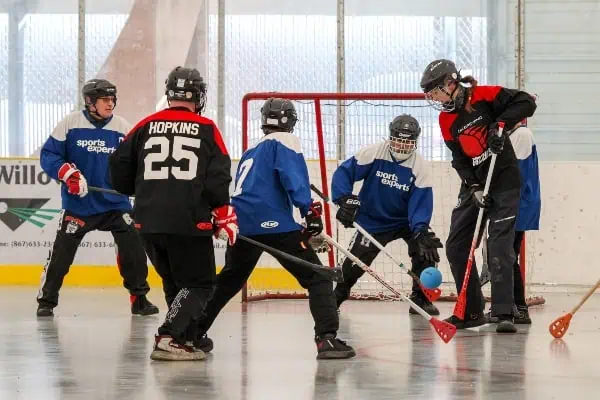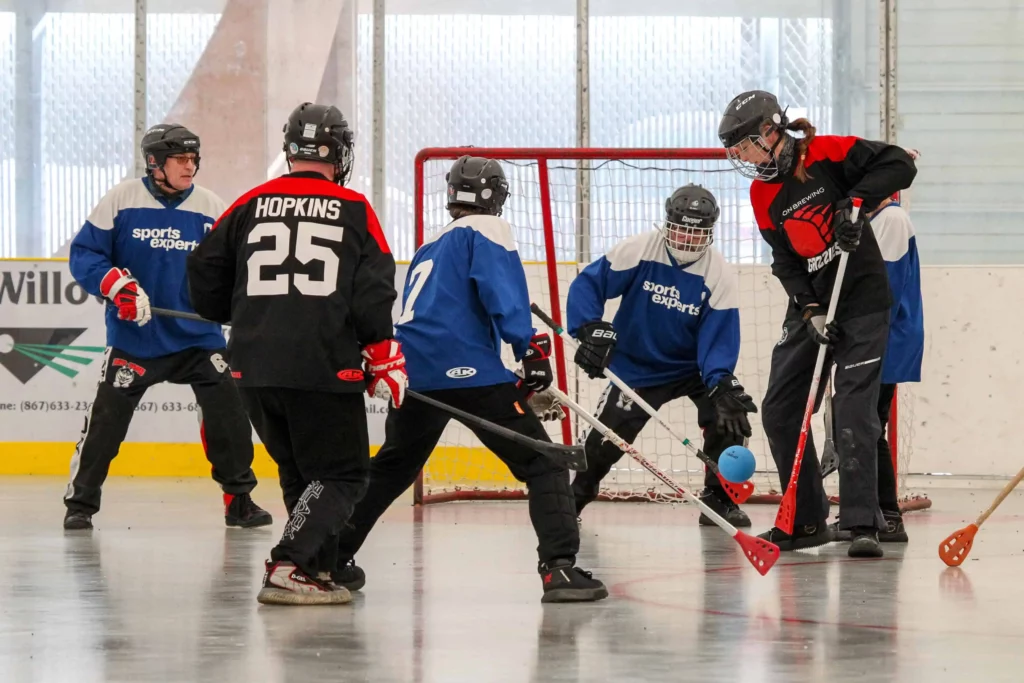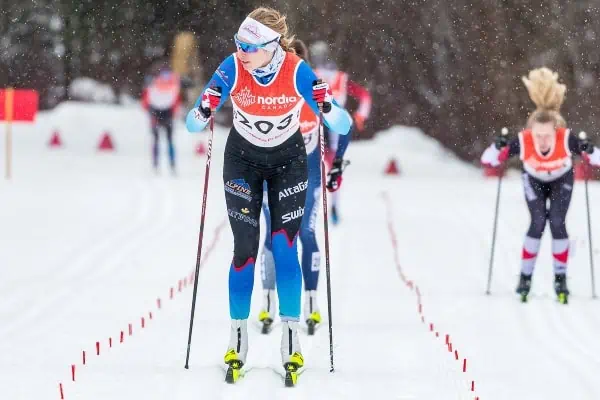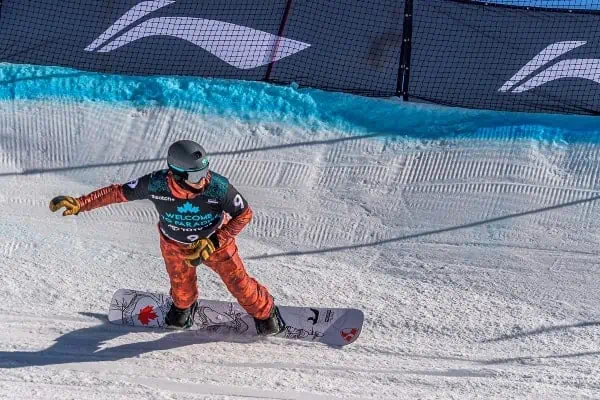Spring is a time of confusion for skijorers. The words “yes, but” are used more and more often as the days progress.
“Isn’t the heat just wonderful?” gushes a spring enthusiast.
“Yes, but,” answers the skijorer, “it’s too warm for the dogs.”
“Doesn’t the sun feel so good?” enthuses another.
“Yes, but,” says the skijorer hesitantly, “it’s melting the trails.”
After a few more of these counter-comments, the skijorer is met with an exasperated look.
Eventually the skijorer starts to wonder, “Is there something wrong with me? After eight months of winter, why am I not happy that it’s over?”
Therein lies the quandary. Skijorers are quite normal on the whole; they are happy that only two layers of clothing are needed instead of six, that cars start without difficulty and that tans are on the way.
But all of this signifies what strikes dismay into the heart of the avid skijorer: the season is over.
Skijoring is difficult to do in the depths of winter. While the dogs don’t mind if it’s too cold, it’s not pleasant for most humans.
Some avid outdoor types skijor no matter what the temperature, but in general, minus 45C is not considered a pleasant run. For example, it’s difficult to know how to dress. If you overdress you’ll sweat and if you underdress, you’ll freeze.
In general, folks agree that minus 20C is tops for a pleasant ski. As all Yukoners know, it doesn’t warm up to that temperature often during most of the winter.
So spring is usually the nicest time for skijoring. The days are starting to get longer and the weather is cool, but the sun is bright. There are just not enough weeks like that in the season!
As the end of the season draws near, it’s difficult to know exactly when to stop skijoring. The sun draws skijorers outside – but what if it’s too warm, too slushy? Should this be the last run? Will it be too hard on the dogs if we go one last time? Can I comfortably say this is the end and live with it?
There is also the pain factor to consider. When the weather stays cold, trails are in good condition. If you tumble, the snow will absorb your fall and it only hurts a little.
Once the temperatures start warming up during the day and dropping at night, the trails start melting and freezing. They then become slick and hard. Any ruts or snowmobile tracks made in the soft, melting snow will freeze, and these bumps will provide an extra pain factor when you fall.
Ski pants rip, bruises and sprains abound, and the idea of dogs pulling you on two sticks becomes suicidal.
Some skijorers use their number of bruises as an indicator as to when to pack up the skis and harnesses.
Others use the colour of their dogs. It’s much harder for black dogs to stay cool in the heat compared to lighter coloured dogs, so many skijorers end the season earlier if they have only black dogs (and probably make a mental note to acquire a white dog next year).
In fact, many a black skijoring dog has been spotted on the trail wearing a white T-shirt to cut down on overheating.
Of course, grabbing a t-shirt from home and wrapping it around the dog doesn’t always work; the larger, human t-shirt may come undone and get tangled up in the dog’s legs.
A customized dog t-shirt will save the skijorer the frustration of trying to remember knots learned in summer camp to keep a human t-shirt tight around a dog’s middle.
No matter what technique a skijorer uses to figure out the season’s end, there is one inescapable fact – it will eventually end.
No matter how much a skijorer wails, “But I’m just not ready!” eventually the trails will be too soft, the heat will be too much and skijorers will trade in their skis for walking shoes.
They soon accept it and enjoy all that the summer months have to offer. But the thought of skijoring never goes far away, and you can bet that the first time it snows, you’ll find a skijorer out there assessing the accumulation on the ground and wondering if there’s just enough to hook up those dogs and start the season again.




